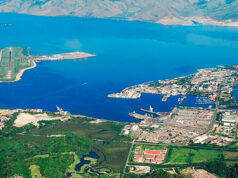Philippine PMI gains further momentum in November
By Melissa Luz T. Lopez, Senior Reporter
PHILIPPINE manufacturing activity further picked up steam in November to post the biggest surge this year on the back of strong demand for products both locally and abroad, according to monthly tracking done by IHS Markit for Nikkei, Inc.
The seasonally adjusted Nikkei Philippines Manufacturing Purchasing Managers’ Index (PMI) picked up to 54.8 in November from 53.7 the previous month, signaling “further improvement in business conditions” amid production expansion and new orders.
A PMI reading above 50 suggests improvement in business conditions compared to the previous month, while a score below that signals deterioration.
“The latest reading was also the highest so far this year,” read the report on the Philippines, citing expansion in output and new orders. “Anecdotal evidence suggested that strong economic conditions, promotional activity and greater client demand continued to sustain order book growth.”
Higher export demand for Philippine products gave a boost to the already upbeat orders from the domestic market, the PMI report added. This comes ahead of the expected surge in demand in time for Christmas.
Factories also hired more workers to take on additional workload ahead of the holiday season, as well as to address backlogs. November marks the third straight month of improving operating conditions, and hinted at stronger industrial activity during the fourth quarter.
The manufacturing PMI is composed of five sub-indices, with new orders having the biggest weight at 30%, followed by output (25%), employment (20%), suppliers’ delivery times (15%) and stocks of purchases (10%).
The monthly data is culled from replies to questionnaires sent to purchasing executives of 350 industrial companies. “Factories stepped up their purchasing activity to meet current and future demand. The rise in buying levels was the greatest since December last year,” the report added.
PMI growth logged 55.7 in December 2016.
More upbeat factory activity came despite “intensified” inflation pressures, although businesses remain optimistic even as prices of raw materials are on the rise. The central bank pegged November inflation between 2.9-3.6% in November, coming from the previous month’s 3.5%.
Still, manufacturing firms expect greater output in the coming months, signaling that they grew “more confident” about future business prospects.
Bernard Aw, principal economist at IHS Markit, said the latest PMI readings suggest that the industry will see its “strongest quarter for 2017.”
“Furthermore, there are signs in the latest survey sub-indices to suggest the upturn will gather pace in December,” Mr. Aw said in a statement. “The PMI suggests the strong growth momentum in the Filipino economy has some way to go.”
However, Mr. Aw noted that rising prices of raw materials and basic goods remain a concern for companies, coupled with a weaker peso, could result in an “unwelcome tightening” of profit margins.
Security Bank economist Angelo B. Taningco said broad business confidence among domestic and foreign markets drove stronger demand for local products, noting robust PMI figures provide assurance that economic growth will remain buoyant.
“The positive performance of manufacturing certainly bodes well for the Philippines’ GDP growth, which I think will likely stay above 6% in the fourth quarter,” Mr. Taningco said via e-mail. “However, its buoyant activity in November alone is not enough for GDP growth to reach 7% or higher; I think this has to be supported by improvements in the output activity of both agriculture and services sectors.”
Philippine gross domestic product expanded by 6.9% during the third quarter, beating market expectations and bringing the nine-month tally to 6.7%. This compares to the 6.5-7.5% growth goal set by the Duterte administration for the full year.



